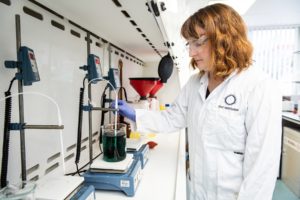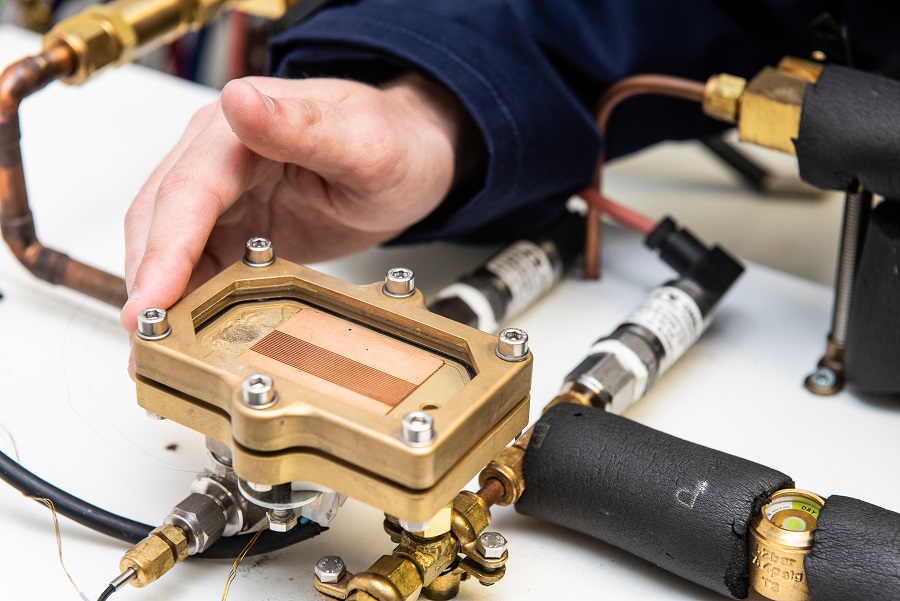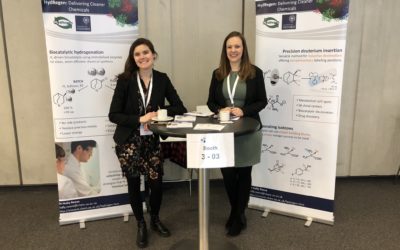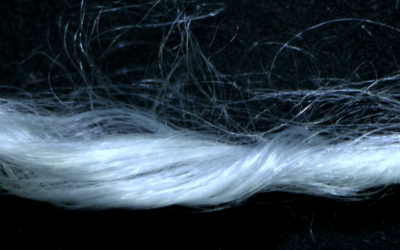Pour a glass of champagne and the average person will be excited as the rising bubbles prompt a celebratory toast.
At Oxford nanoSystems those bubbles are both exciting and the perfect example of how its technology works. Each one is the result of the carbon dioxide held within the champagne coming into contact with tiny irregularities in the glass. The miniscule pores, where the surface is not perfectly flat, cause the carbon dioxide to boil to the top as gas bubbles.
According to CEO, Ian Russell, this is the best way to explain what the company offers through its coating technology which has been shown to increase the performance of heat exchange systems by up to 70%.
“We have an innovative metallic alloy coating that is deposited on the heat exchange surface using a proprietary process – rather like the way crystals are grown. We simply dip the material and it’s coated,” he says.

“Under an electron microscope it has a dendritic or cauliflower-like appearance. It makes a material very porous and so, just like those tiny imperfections in a champagne glass, they encourage more boiling.”
Better and smaller
The technology can be used in devices, such as refrigerators, heat pumps and air conditioning units, that use heat exchange to either cool or heat a building. By becoming more efficient, Russell explains, the device can be made to not only work more efficiently, manufacturers will also have the option to make devices smaller.
“Heat pumps are a good example where we can help,” he says. “They’re typically the size of a domestic refrigerator and some people may find them a bit of an eye-sore standing next to their house. We can help the manufacturers get the same performance from a smaller unit. It’s important we make them look more appealing because they will have a big role to play in replacing gas boilers. Every gas boiler uses up more energy than it delivers – but a heat pump will typically deliver four times more energy than it consumes. Our technology can take that to around a five-fold increase and in a smaller, more appealing box.”
Proof of concept
The technology is likely to be first seen in commercial refrigerators, following the news Oxford nanoSystems is in early stage proof of concept work with a major supermarket.
“Supermarkets need help hitting zero carbon emission targets because they account for 1% of the country’s total electricity use and half of that consumption is in refrigeration alone,” says Russell.
“We’re working on a proof of concept as a first step. We’ll then need to show our technology runs efficiently and reliably over a long period. Then we’d hope we might move into a trial shop and later a trial area. It may be quite a while until it is rolled out nationwide, but we are confident we’ll start to see some commercial revenues starting to come in at some point next year.”
Although one of the company’s co-founders was a Professor at Oxford University, it does not rely as heavily as many local start-ups on the University for new recruits. Russell reveals the business operates in a niche where top talent is willing to relocate to the Abingdon area from across the UK – and that the Oxford region is an excellent area to base an early stage company. Hence, there is no advantage in moving to a different part of the country and requiring staff to relocate again. His only wish is for more consistent coverage from mobile networks across the region.
About this case study - Powering up for the Green Recovery: Oxfordshire's role in building a cleaner future
Advanced Oxford would like to thank all of the companies that participated in this project for their time and for providing us with images which illustrate their technology and work. This case study was written by Sean Hargrave, working with Advanced Oxford.



